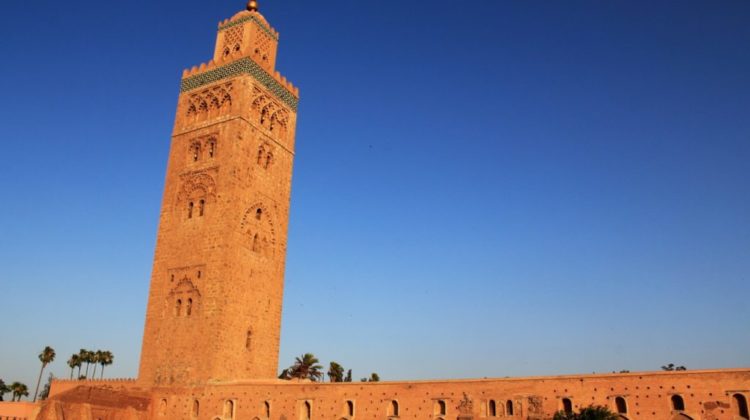
The beautiful city of Marrakech is likely to be your first destination on a trip to Morocco. Arriving in Marrakech can be an overwhelming experience if you’ve never visited the country before.
However, it’s one of the most rewarding destinations in Morocco, a fascinating and beautiful country, with plenty of history.
Oasis of palm and orange trees in tranquil gardens make it surprisingly easy to escape the hustle and bustle, in turn making the city far less intimidating.
The locals are friendly and welcoming away from the main tourist attractions.
The local Moroccan food is enjoyable for even the pickiest of eaters, with tagines and couscous readily available at every restaurant.
Here is our list of the top activities in Marrakech Morocco.
Table of Contents
Jemaa el-Fna
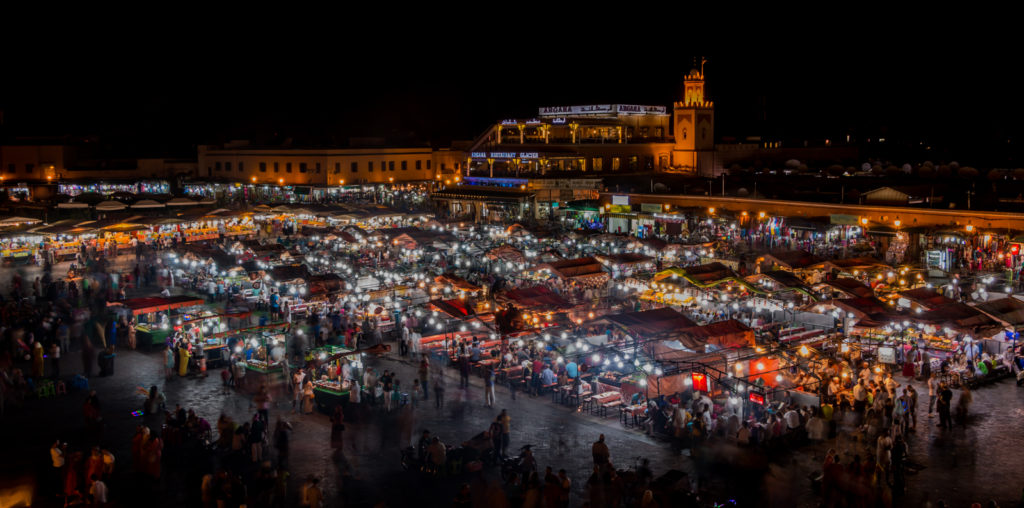
Visiting Jemaa el-Fna, the main square of Marrakech’s Old Town, is the ultimate Moroccan experience.
Every day at around noon, Jemaa el-Fna comes to life with a variety of food and entertainment stalls.
Buy some freshly squeezed orange juice, get your hands tattooed with henna or watch the snake charmers perform – there’s no shortage of ways to keep busy.
In the evening, the square turns into a large open-air restaurant; with food stalls as far as the eye can see. Cheap eats are plentiful here, with options ranging from soups to kebabs to even entire sheep heads!
At night, the entertainment is stepped up another notch from the afternoon, with bands playing, acrobats performing and dancers twirling all night long.
For this reason, it’s well worth paying a visit to Jemaa el-Fna both during the day and at night.
Saadian Tombs
Discovered in 1917, the Saadian Tombs date back from the time of the sultan Ahmad al-Mansur, who ruled the country from 1578 to 1603.
The tombs contain the bodies of members of the Saadi Dynasty, one of Morocco’s earliest dynasties.
The tombs are beautiful, especially for anyone interested in Islamic architecture. The walls are lined with tiles arranged into mosaics, with intricately carved arches leading you from room to room.
Between each tomb you’ll find tranquil gardens, filled with orange trees and date palms.
Aim to visit the tombs in the early morning, before the crowds arrive and the temperatures become unpleasant. If you’re finding the hassle from touts to be too much, the gardens of the Saadian Tombs make for the perfect hideaway.
Museum of Marrakech
The Musee de Marrakech, or Museum of Marrakech, is housed in the Dar Menebhi Palace. The palace, built at the turn of the 20th century, has contained the museum from 1997 until present day.
Here, you can spend a few hours just learning about classical Andalusian architecture.
With its colorful mosaics, crisp white walls and soaring columns, the Museum of Marrakech contains an impressive variety of collections.
From modern and traditional Moroccan art, historical books, coins and pottery of the Berber people, you could easily spend an afternoon lingering over the exhibits.
After you are done admiring the exhibits, unwind in the museums’ café, and don’t forget to check out the impressive palace gardens.
El Badi Palace
The incomparable palace, or the El Badi Palace, is an ancient monument that took approximately 25 years to construct but was later was torn apart by the Alaouite Sultan Moulay Ismail, in the seventeenth century.
After destroying the palace, the sultan then decided to use the material obtained to decorate his own palace in Meknes.
Now, only ruins remain of El Badi Palace, the palace commissioned by the Saadian Sultan Ahmad al-Mansur in 1578.
Take an afternoon to wander through the now destroyed hallways and picture what the palace would have looked like in its heyday, before heading up to the rooftop to receive an unrivalled view of Marrakech from above.
If you’re lucky you may even visit at a time when storks are nesting in the palace walls, making for a truly impressive sight.
The Souks
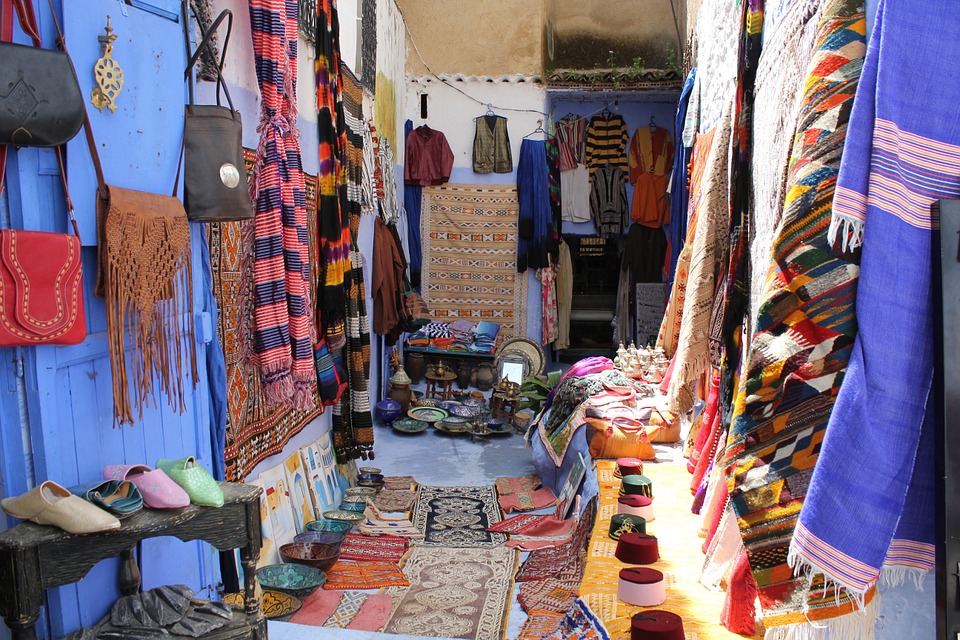
The souks of Marrakech are an open-air marketplace where you can find anything you could possible need. Marrakech has one of the most fascinating souks in Morocco, where locals and tourists mingle with one another to haggle for a whole host of items.
Just a few of the products you can buy include Moroccan foods, colorful lanterns, spices and herbs, handmade handicrafts, wooden figurines and boxes, engraved silverware, flatware and boldly colored fabrics and textiles.
Bahia palace
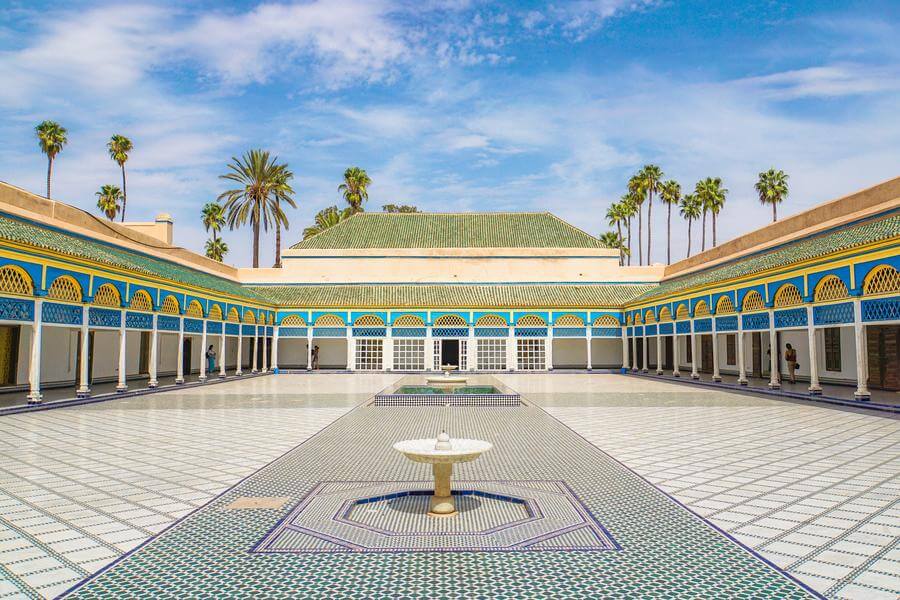
“Bahia” means “brilliant” in Arabic, and when you visit this palace, you will understand why this building was so named! It was built in 1860 with the ambition to be the largest of its time. With no less than 160 rooms and 3 hectares of gardens, it is not small!
Going to admire the sublime splendor of the Bahia Palace is an unusual activity that we invite you to do during your stay in Marrakech.
Indeed, it is not every day that you can walk around this vast residence which comprises no less than 150 richly and finely decorated rooms as well as interior courtyards and simply grandiose gardens.
Each room and courtyard is decorated with mosaics, marble, sculptures, and elaborate and colorful paintings.
Soaking up the Moorish architecture of the palace is truly one of the best things we recommend you do in Marrakech.
Koutoubia
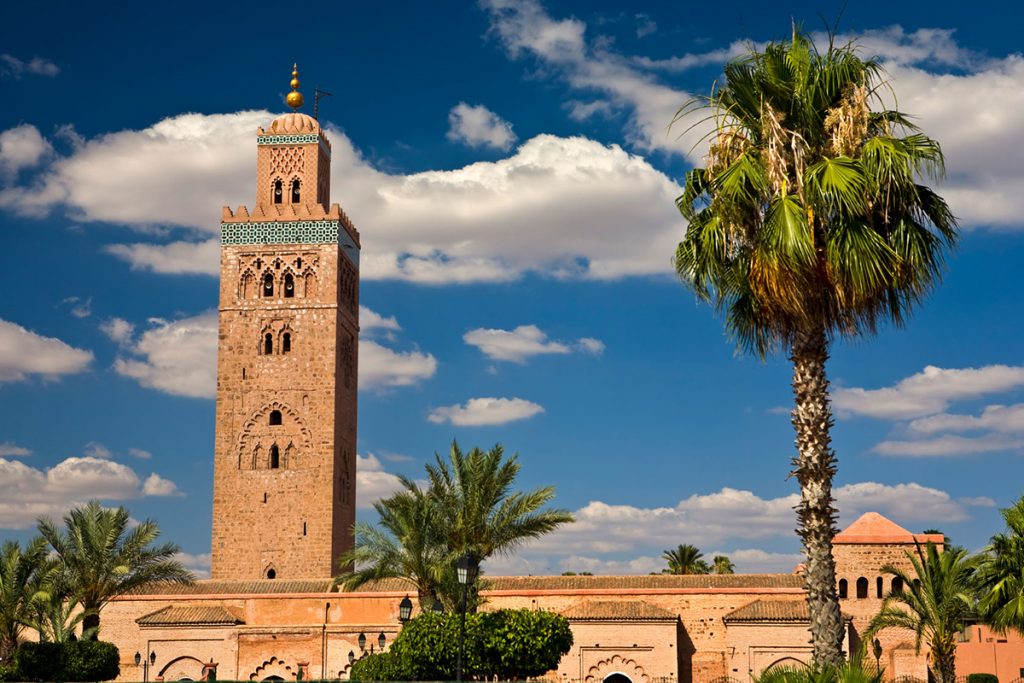
The typical architecture of Marrakech is protected by ancient local laws that stipulate that no building can be higher than a palm tree.
It is undoubtedly this decision that makes the Koutoubia Mosque, built in the 12th century in the heart of the Medina, a tourist attraction and a landmark that we urge you not to miss!
This magnificent Sunni mosque of the XIIth century, whose minaret overhangs the surroundings, is one of the must-sees in Marrakech.
Its architecture and its ascetic decoration illustrate perfectly the art of the Almohads!
Located in the Medina of Marrakech, the Koutoubia mosque offers a solemn interlude in the red city.
However, be careful with your attire, out of respect for the believers who pray there, shorts and tank tops are forbidden.
And it is precise because the Koutoubia mosque is a place of worship that it is only possible to visit it from the outside by strolling in its magnificent garden and observing its imposing minaret.
At the same time, and as is often the case in religious places in this country, it is forbidden for non-Muslims to enter… However, nothing prevents you from approaching the mosque to appreciate its architecture or to enter the gardens.